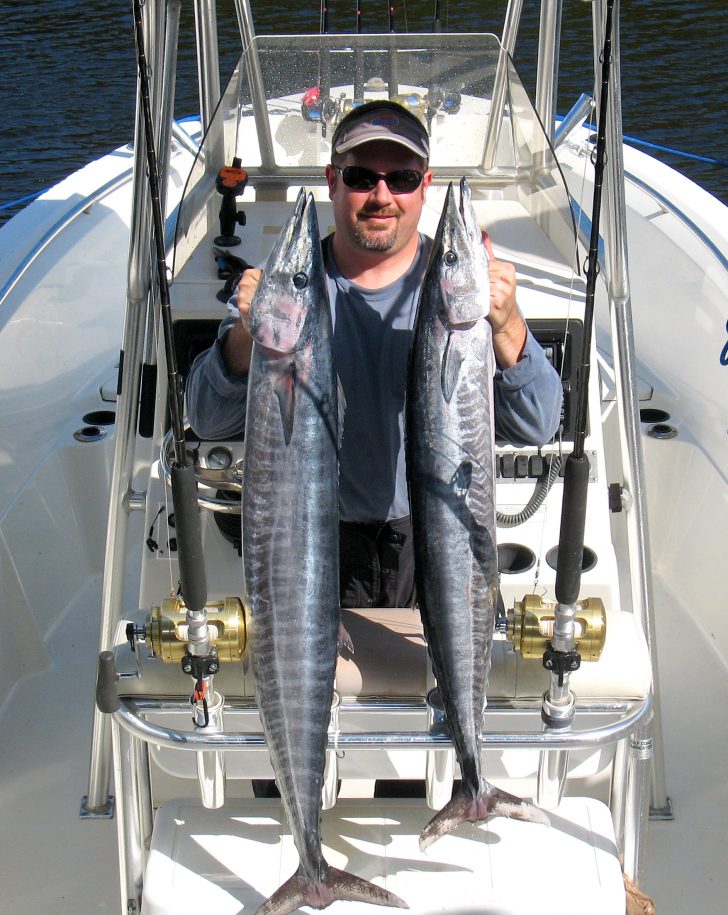by Bill Buckley, Contributing Writer
As I write this, hurricane Irma is slowly passing the tiny island of Cay Sal on the southwest corner of the Cay Sal Bank, following a projected path through Sugarloaf Key and along the west coast of Florida. I hope the next few days of the storm and weeks of clean-up after find everyone safe with minimal damage.

October is the first month in Fall that we start to see a slight decrease in water temperature. That decrease triggers the annual southbound migrations of many baitfish, with the most noticeable being mullet. Massive mullet schools can be seen darkening the shallow waters along the beaches and showering patches of the Intracoastal as jacks and snook attack from below. Following these mullet schools are plenty of predatory game fish like big jack crevalle, snook, bluefish, tarpon, and probably the most fun to battle, spinner sharks.
Mullet are highly versatile baits that most fish will readily eat. Finding and catching mullet with a castnet is generally easy as they tend to make a lot of disturbance on the surface. Finger and mid-sized mullet are great live bait, but the large ones are better used as fresh cut bait. Pitch live mullet to jacks and snook where you find them chasing the schools in canals, inlets, and along the beach. A large half mullet cast beyond the surf zone is a classic method of catching tarpon from the beach. Large whole butterflied mullet are good for targeting spinner sharks from a drifting or anchored boat in 20ft or less water near the beach. Move out to the deep reef and send down a finger or mid-sized mullet plug (head and tail cut off) for your chance to haul up groupers and large mutton snappers. Offshore, it seems to be impossible for dolphin of any size to refuse a live finger mullet. For fun, toss a dip net full of finger mullet to a school of dolphin and enjoy the show!
Fall also brings an increase in wahoo catches, as has already been seen in September. High-speed trolling is very effective on our coast, but is not necessary. Trolling bonito strips, split-tail mullet, and Ilander-skirted horse ballyhoo behind planers and cigar weights at 8-10kts in 100-250ft depths can be just as productive. Whichever method you choose, be ready for a screaming drag and always keep your boat moving forward to keep tension on the fish. Like other high-speed wahoo trollers, I prefer to increase my speed a few knots during the wahoo’s first run to really set the hook, then decrease speed to where I can just barely recover line for the rest of the fight.
It’s Saturday evening, Sept. 9th, and Irma’s winds are starting to increase here in Boca Raton. It’s time to send in my report and unplug the computer. Hope you were able to take advantage of the typically fantastic post-storm fishing!
Bill Buckley “Uncle Buck”
Graphic artist & offshore angler, Boca Raton, FL